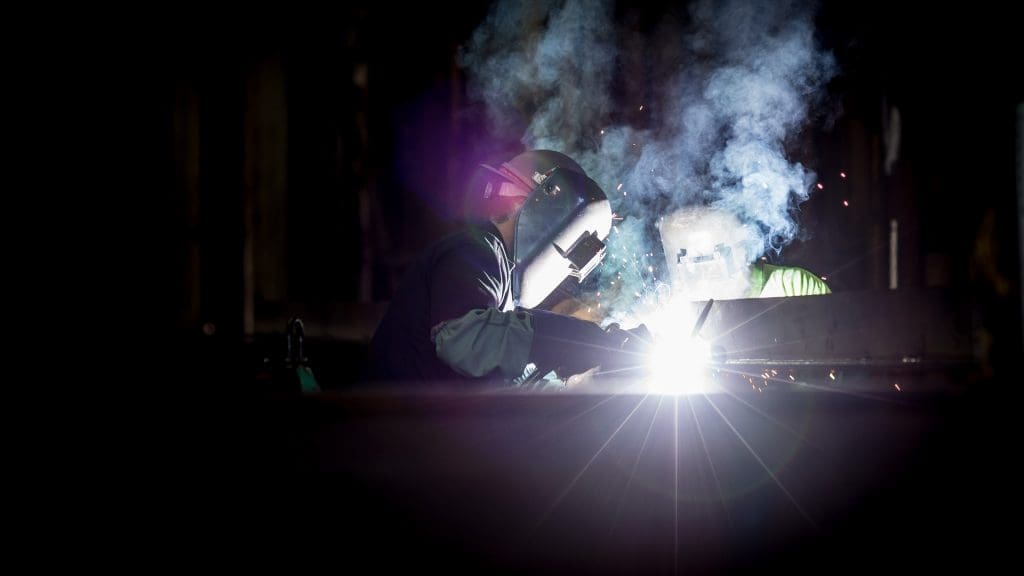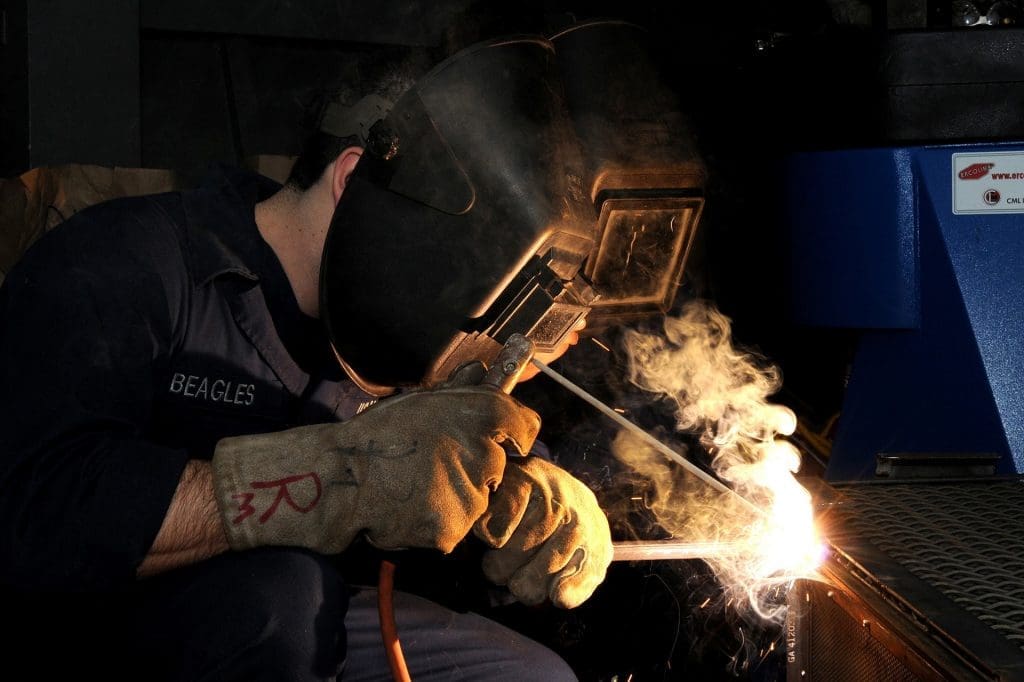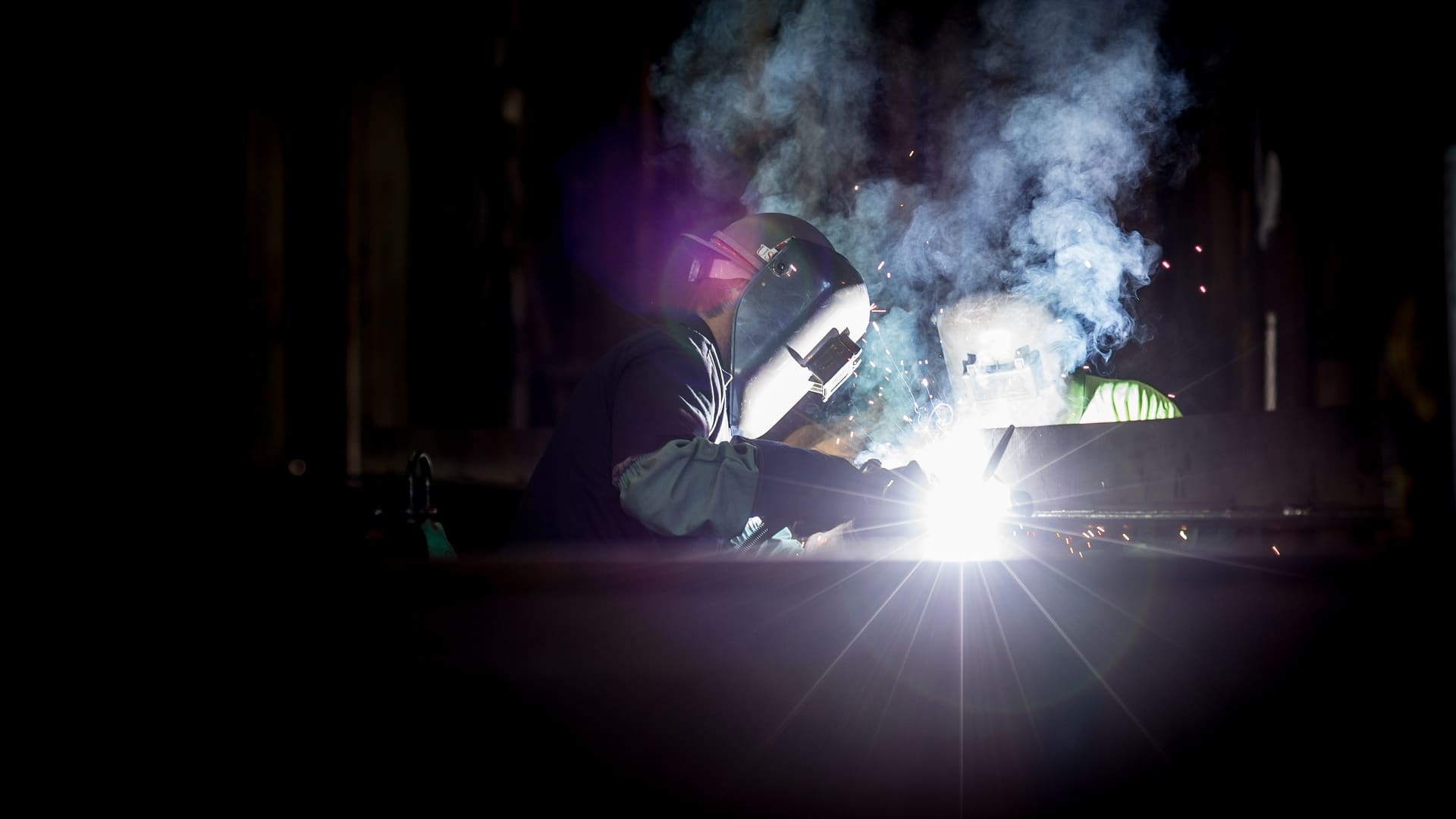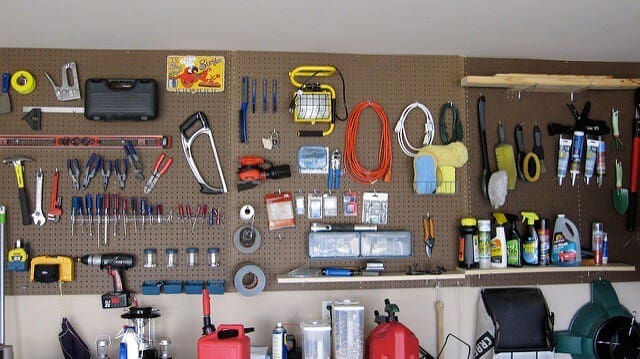7 Tips for Welding in a Home Garage
If you are thinking about starting some welding projects in your home garage, you will need to give some advance consideration to the overall layout and safety of your workspace. At a very minimum, you will want to create a safe, anti-fatigue matting for welders, an uncluttered workspace that reduces any risk of welding sparks igniting anything flammable within your home garage. With that in mind, here are 7 tips for welding safety in a home garage.

Tip #1: Use wheeled metal carts to create an uncluttered workspace
For maximum safety, you should position your welding workstation in the center of your garage. To give you the greatest freedom of motion and make it simpler to clean up after a job, it’s advisable to store all of your welding equipment on a metal cart that can be wheeled into the center of your workspace. Whether it’s a professional welder or a cheap plasma cutter, this cart will make your job easier. Optimally, the entire cart should be made of heavy-duty metal, and should include a lower shelf space for extra storage. You can check out wheels of cart at Industrial Truck & Equipment ITEC.
Tip #2: Choose welding equipment that is appropriate for your skill level
While it can be tempting to buy the highest-power welder possible, you need to take into account your skill level. So what is the best welder for beginners? The welders that are easiest to learn and provide the quickest, cleanest results are known as MIG welders. Three top-of-the-line brands that stand out for their MIG welders for beginners include Miller Electric, Lincoln Electric and Hobart. Material quality is also an important factor to consider for this you need to get the correct materials from reputable suppliers.
Tip #3: Remove or secure all flammable materials from your home garage
Needless to say, the greatest risk from welding in your home garage is that sparks from your welder manage to ignite flammable materials. So remove anything from your garage that might be flammable – cardboard boxes, old newspapers and rugs. And make sure that you take steps to secure and store upright any items that cannot be removed – such as fuel tanks.
Tip #4: Keep a fire extinguisher nearby


This might sound obvious, but you’d be surprised at how many people keep their fire extinguisher in a spot within the home where it is inaccessible. If a fire breaks out in your garage, you want to be sure that you can contain it immediately.
Tip #5: Tidy up any hoses or power cords
The risk here is that you might inadvertently trip over a garden hose or power cord that is not stored properly. So make sure you tidy up any hoses or power cords.
Tip #6: Make sure you have sufficient lighting
Most garages only have a very small light bulb to illuminate the entire space. If you are going to be doing a lot of welding in your home garage, you might think about installing additional light fixtures. Just make sure there are no loose wires or cords from those lights.
Tip #7: Ensure there is sufficient ventilation for your workspace
If you will be doing welding year-round, you will need to think about ventilation for your workspace in both very hot and very cold weather. Optimally, you should have a window that you can open within the garage. For cooling, you can install a box fan in that window.
Conclusion
Using these 7 tips, you can maximize welding safety in your home garage. Once you know which welder is the best for beginners, you can start to design your workspace with that welder in mind – including any additions to the layout, electrical configuration, purchase a grit-spreader, for your home garage that might be necessary.





